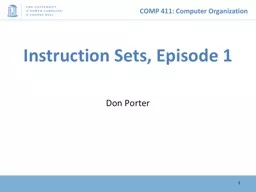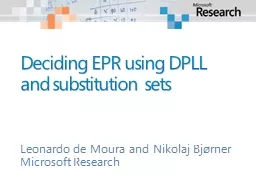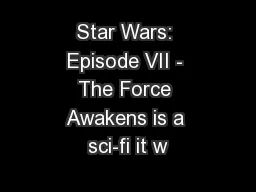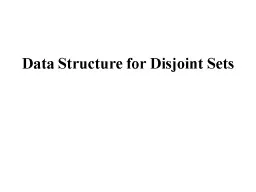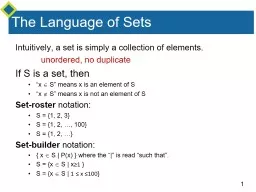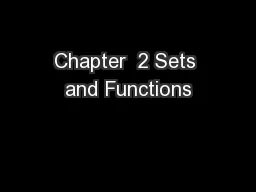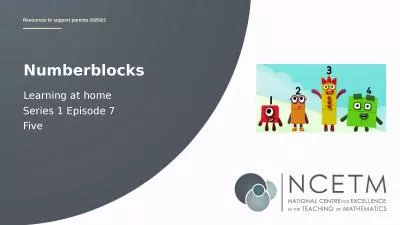PPT-Instruction Sets, Episode 1
Author : lois-ondreau | Published Date : 2019-03-16
Don Porter 1 Representing Instructions Todays topics von Neumann model of a computer Instruction set architecture MIPS instruction formats Some MIPS instructions
Presentation Embed Code
Download Presentation
Download Presentation The PPT/PDF document "Instruction Sets, Episode 1" is the property of its rightful owner. Permission is granted to download and print the materials on this website for personal, non-commercial use only, and to display it on your personal computer provided you do not modify the materials and that you retain all copyright notices contained in the materials. By downloading content from our website, you accept the terms of this agreement.
Instruction Sets, Episode 1: Transcript
Download Rules Of Document
"Instruction Sets, Episode 1"The content belongs to its owner. You may download and print it for personal use, without modification, and keep all copyright notices. By downloading, you agree to these terms.
Related Documents

